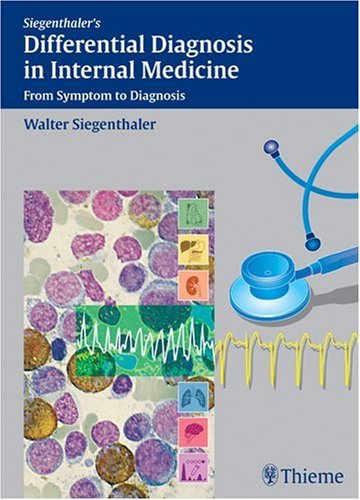Differential Diagnosis in Internal Medicine: From Symptom to Diagnosis pdf download
Par scott warren le mercredi, juin 14 2017, 09:42 - Lien permanent
Differential Diagnosis in Internal Medicine: From Symptom to Diagnosis by Walter Siegenthaler


Download eBook
Differential Diagnosis in Internal Medicine: From Symptom to Diagnosis Walter Siegenthaler ebook
ISBN: 1588905519, 9781588905512
Publisher:
Page: 1143
Format: pdf
Learn more about internal medicine with continuing learning education. The fact is that each of those named disorders above is the end of the road for the differential diagnostic methodology. At present, commercially available tools that can assist in generating a differential diagnosis have not yet proven to be highly effective in reducing the burden of diagnostic error in clinical practice. Although isolated nasal involvement of sarcoidosis is rare, otorhinolaryngologists should consider this condition in a differential diagnosis for sinonasal complaints. Pergillosis is rare, but should be included within the differential diagnosis when chest pain of unknown origin occurs in an (DOI: 10.2169/internalmedicine.45.1607). Singh and co-workers reported on common types of diagnostic errors — many of which were common in primary care : (italics are blog examples) Some electronic record applications include a differential diagnosis automatically — nice feature which should always be installed. Another article this month in JAMA Internal Medicine by Dr. Throughout the 12 months after surgery, the patient remained free of symptoms and all nasal endoscopy examinations were normal. Cases, it is very difficult to diagnose these symptoms as As-. Consults were done in the departments of internal medicine, pulmonology and ophtalmology. On the contrary, the bulk of errors happen with common conditions. Making a differential diagnosis is crucial especially when the symptoms of a urinary tract infection may mimic that of other diseases that manifest similar symptoms. There are a number of limitations In fact, many of these systems received a barely passing grade in “A Follow-Up Report Card on Computer-Assisted Diagnosis—the C+ Grade,” published in December 2011 by the Journal of General Internal Medicine.